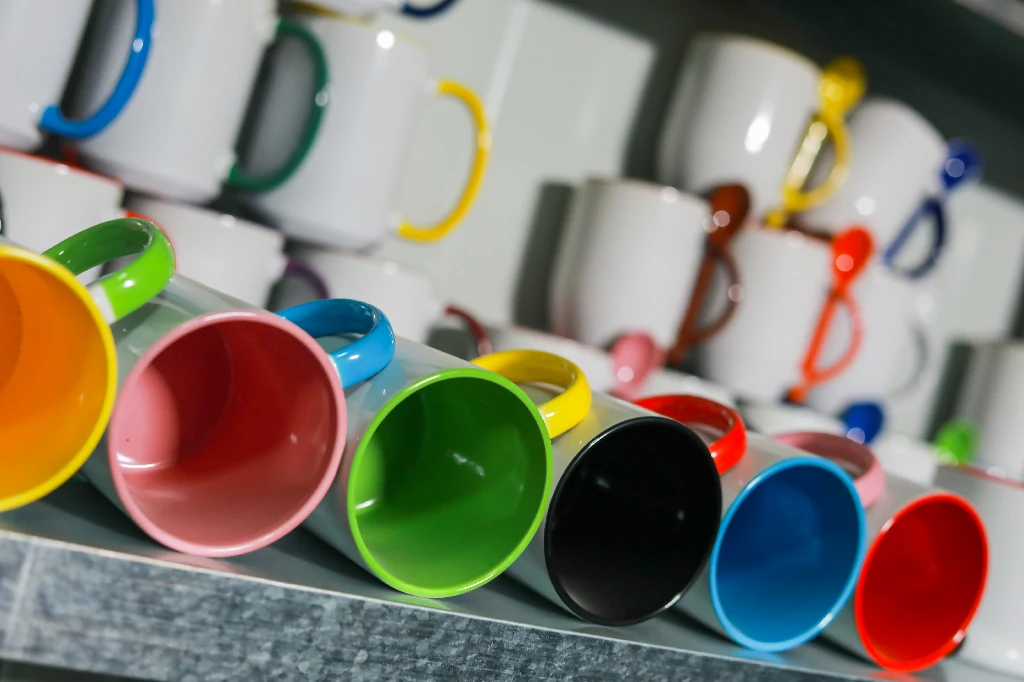As a common drinking water container, the capacity of a mug directly affects the user’s drinking experience. Common mugs on the market include 6oz White Coated Mug, 3oz Mini Ceramic mug, 15oz White Coated Mug. Different usage scenarios and needs have different requirements for the capacity of mugs. Therefore, understanding the capacity standards of mugs is crucial for choosing a mug that suits your needs. This article will introduce the capacity standards of mugs from multiple aspects to help readers better understand and choose mugs.
Generally speaking, the standard capacity range of common mugs on the market is between 200 ml and 500 ml. The capacity within this range can meet the daily drinking needs of most people, whether as an office cup or a home drinking cup.
In addition to the standard capacity range, there are also some specially designed mugs on the market whose capacity may exceed the conventional range. For example, a large-capacity mug can have a capacity of 1000 ml or even more, which is suitable for people who need to work or exercise for a long time; while a small-capacity mug may have a capacity of only about 100 ml, which is suitable for children or special people who need to control the amount of water they drink.
Relationship between capacity and size
The capacity of a mug is closely related to its size. Generally speaking, the larger the capacity of a mug, the larger the diameter of its body and mouth will be to accommodate more liquid capacity. However, different designs and manufacturing processes may result in different sizes of mugs of the same capacity.
Impact of material on capacity
The material of the mug will also have a certain impact on the capacity. Mugs of different materials vary in thickness, weight, and thermal insulation performance, all of which may affect the actual available capacity. For example, a thicker or more thermally insulating mug may take up more internal space, resulting in the actual available capacity being slightly less than the marked capacity.
Standardized measurement units
When marking the capacity of a mug, standardized measurement units such as milliliters (ml) or ounces (oz) are usually used. This helps consumers understand the capacity of the mug more intuitively, and compare and choose. At the same time, it also helps ensure that manufacturers adhere to uniform standards during the manufacturing process.
The relationship between ounces (oz) and milliliters (ml) can be expressed by the following mathematical formula:
1 oz (liquid) = 29.5735 ml
This formula tells us how to convert ounces to milliliters.
Therefore, if we want to find out how many milliliters are equal to 1 ounce, we can simply use this formula to get the answer.
The calculation result is: 1 ounce is 29.57 milliliters.
So, the number of milliliters corresponding to 1 ounce is 29.57 ml.

How to choose a mug with the right capacity
Choosing a mug of appropriate capacity is essential to meet personal water needs. According to personal water intake and usage habits, choosing the right mug capacity can avoid frequent pouring or insufficient water intake. For example, for people who need to work or exercise for a long time, choosing a 15oz White Coated Mug can reduce the number of pouring water; while for people who drink less water, you can choose a small-capacity mug such as 6oz White Coated Mug to avoid waste.
Large-capacity mugs often mean heavier weight, which may be inconvenient for people who need to carry or use frequently. Therefore, when choosing a mug, you need to weigh the relationship between capacity and weight according to your personal usage needs and preferences.
When using it in the office or at home, you can choose a standard-capacity mug; when traveling or exercising outdoors, you may need to choose a lightweight and moderate-capacity mug for easy carrying. Therefore, when choosing a mug, you need to fully consider the needs of the usage scenario to choose the product that suits you best.
How to ensure that the capacity of the cups meets the standard
Use accurate measuring tools:
The mugs we produce are strictly implemented in accordance with international standards. From the beginning of design to mold production and final mass production, the capacity size of the mug is strictly controlled.
During the production process, calibrated capacity measuring tools such as measuring cylinders or electronic measuring equipment are used to ensure that the capacity of each mug can be accurately measured.
Our production supervision department also regularly maintains and calibrates the measuring tools to ensure their accuracy and reliability.
Choosing us means choosing a reliable partner. Welcome to contact us to establish a cooperative relationship and create a win-win future.
